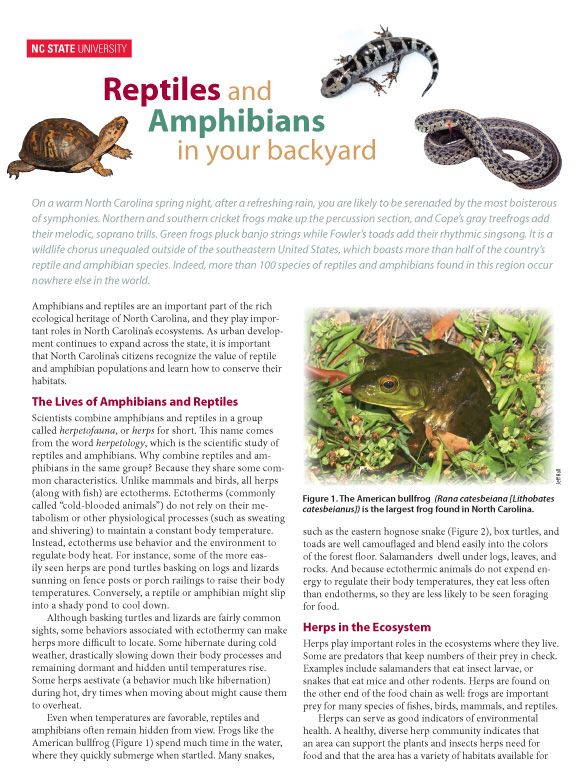Readers may or may not realize that there are hundreds of design resources here on The Metropolitan Field Guide. On top of this website is a drop-down menu titled ‘Design Resources’ where you’ll find documents for designing butterfly, bird, bat and other wildlife species habitat categorized by species as well as region. You’ll also find plant lists for wildlife and a variety of other subjects such as adding habitat to golf courses, designing green roofs, rain gardens and wildlife crossings. To bring attention to these amazing downloadable and often free resources, this post marks the beginning of a new series featuring selected resources.
New from the North Carolina State University Cooperative Extension comes Reptiles and Amphibians in your backyard and adds a valuable resource to a rather short list of available information about designing for reptiles and amphibians. While the document is aimed specifically at North Carolina herps, it’s none-the-less a good resource for everyone because it covers a lot of general topics about reptiles and amphibians. The document first discusses the general life histories and differences between reptiles and amphibians and what traits they have in common which cause them to be grouped together into the ‘herps’ category. Also discussed are their role in the ecosystem and what parts they play in the lives of other wildlife species as well as how they are key indicators of environmental health.
Before delving into how to provide habitat, the document wisely describes the impact of human landscapes on herps and what specific problems they face such as roads, pollution and habitat fragmentation. Once readers understand the difficulties facing herps, they can then read about how to help provide and improve habitat. Tips such as building ponds and shelters, using native plants and reducing pesticides are all discussed with detailed sidebars on how to create ponds and shelters.
What makes this document even more valuable is that it takes the discussion beyond backyards to the wider landscape. Topics which apply to communities as a whole such as greenspaces including buffer zones around wetlands and corridors between habitats are also discussed which are valuable not only for homeowners, but city planners and developers too. Additional community planning topics include ways to reduce traffic mortality and minimizing sedimentation and protecting streams sides during development.
Download Reptiles and Amphibians in your backyard






